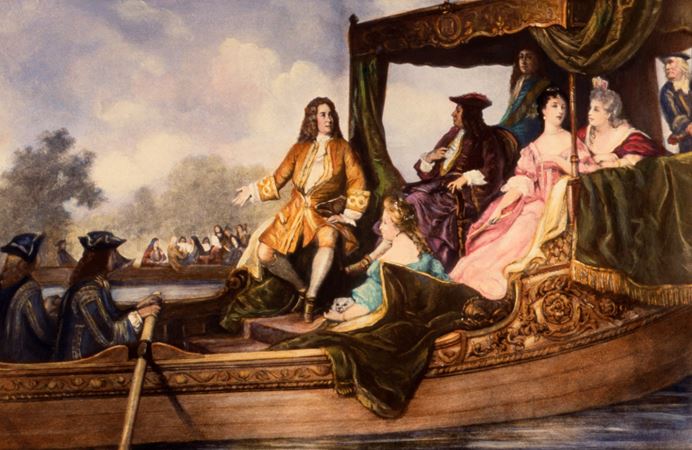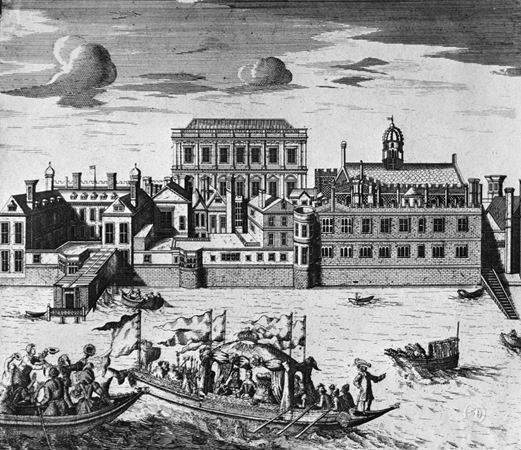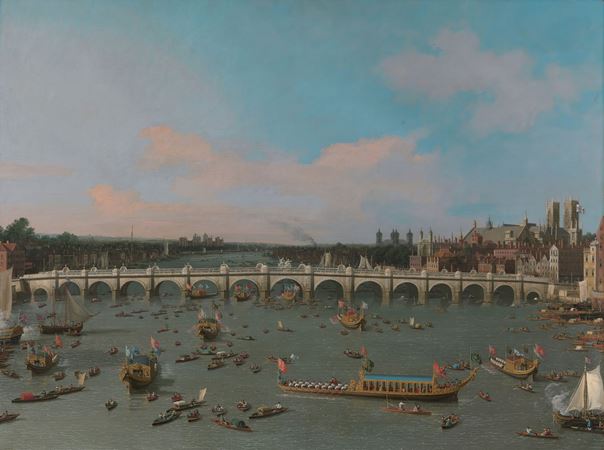“Westminster Bridge, with the Lord Mayor's Procession on the Thames,” by Canaletto (1697–1768), Venetian, active in Britain (1746–55), 1747, Oil on canvas. Yale Center for British Art
Photo by Sepia Times/Universal Images Group via Getty Images
The Thames River has a long history as a watery highway for travel and trade. It was the preferred route for royalty and members of the English court traveling between London and various palaces along the river, allowing for expedient access as well as the chance to avoid any roads that might expose travelers to disease or robbers. The Thames was also the site of great pageants and ceremonies where fleets of elegant barges would entertain guests for hours, not so unlike Chicago’s “Playpen,” but certainly more clothes (and wigs) were involved.
George I engaged George Frideric Handel to provide music for one such voyage on the Thames. Guests boarded the royal barge from the Palace of Whitehall traveling upstream with the tide to Chelsea. Another barge provided by the City of London held 50 musicians, who performed the orchestral suites known now as Handel’s Water Music. The premiere was documented in The Daily Courant on July 17, 1717.
On Wednesday Evening: the King took Water at Whitehall in an open Barge and went up River towards Chelsea. Many other Barges with Persons of Quality attended, and so great a Number of Boats, that the whole River in a manner was cover’d; a City Company’s Barge was employ’d for the Musick, wherein were 50 instruments of all sorts, who play’d all the Way from Lambeth — the finest Symphonies compos’d express for this Occasion by Mr. Hendel; which his Majesty liked so well that he caus’d it to be plaid over three times in the going and returning.
The following images depict the sort of elaborate aquatic escapades that led to the premiere of Handel’s beloved orchestral suites.






